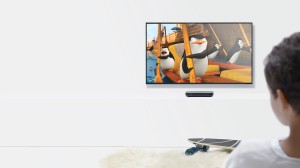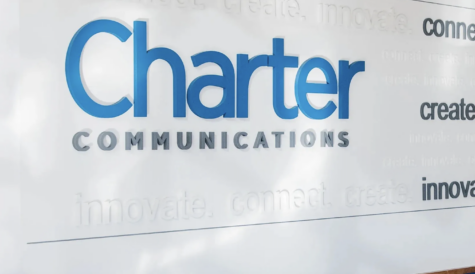Thinking outside the box
 Ultra HD, voice control, smart home functionality and the ability to monitor your blood pressure. The leading lights of the set-top box industry tell Andy McDonald what the next advances in STB technology will bring.
Ultra HD, voice control, smart home functionality and the ability to monitor your blood pressure. The leading lights of the set-top box industry tell Andy McDonald what the next advances in STB technology will bring.
The set-top box market is at a pivotal point in its history with shifts in technology posing existential questions about what role these devices will play in years to come.
The rise of the streaming device market has led some to hint at a light-touch, cloud-focused future where the set-top will be reduced to a dongle hidden behind the TV. Others claim that the advent of IoT and smart home technology will start to change the basic role of the set-top box.
However, against a backdrop of continued consolidation amongst the set-top box makers themselves, recent moves by some of the biggest operators in the TV space hint at the continuation of high-end, sophisticated device deployments.
Sky’s next-generation entertainment service, Sky Q, represents a ground-up rebuild of Sky’s set-top offering. Meanwhile, Liberty Global CEO Mike Fries announced on the company’s Q1 earnings that its next-generation set-top platform, dubbed ‘project Eos’, would be “faster” and “provide more functionality than today’s Horizon box” – all for a cheaper price.
But away from these headline-grabbing developments, what are the broader future trends that are taking hold of this space and what changes should we expect in the long-term?
Over-the-top and into 4K
Many of the developments that we are seeing in the set-top box market today rest around cloud functionality, the integration of over-the-top services, sophisticated search and discovery features, and the addition of 4K.
According to Ovum, 4K Ultra HD set-top adoption in Europe will climb rapidly in the coming years as a proportion of overall DTT, DTH, IPTV and cable set-top box sales. In 2015, 4K UHD capability was present in just 1.02% of the 39.36 million set-tops sold in Europe. This will rise to 27.62% of 41.70 million units sold in 2020, according to the research firm.
“I think we’re seeing a lot of changes around 4K. Now a lot of pay TV operators are pushing 4K set-top boxes, so there’s a new generation of boxes coming in since the beginning of the year or the end of last year, especially in Europe,” says Ovum practice leader, consumer technology, Ronan de Renesse.
“What’s interesting is that most of them tend to be on IPTV – so IPTV-type set-top boxes or hybrid IPTV set-top boxes rather than maybe satellite or cable,” he adds, acknowledging Sky Q with its 4K functionality as an exception.
Recent launch news seems to bear this theory out. In May Portugal Telecom launched a new 4K Ultra HD set-top box, the MEOBox4K, for fibre customers. In March, Vodafone Spain officially launched a new 4K UHD set-top aimed at its XDSL base, while a month earlier IPTV operator Post Luxembourg announced it would launch a 4K set-top from Netgem, the STB N7900. Last year, France’s SFR also launched La Box Fibre Zive de SFR, a 4K Ultra HD gateway that runs on its fibre network.
“4K is being used as a way to market the services and the boxes, and get people onto premium packages, but there isn’t actually a lot of 4K content out there, especially for linear broadcast,” says de Renesse.
Technicolor’s chief technology officer, connected home, Jon Walkenhorst agrees that while there is 4K awareness among its customers, there is not “radical adoption” of the technology yet. He puts this down to a lack of original content and the bandwidth requirements needed to deliver Ultra HD.
“These technologies tend to be more IP video-based and less QAM-based. DSL today is typically not enough bandwidth to deliver those. So I think we’re going to see 4K and Ultra HD become more ubiquitous as IP delivery becomes more ubiquitous,” says Walkenhorst.
Technicolor works with major operators including Telefónica and in France it provides Canal+ Group’s compact, 4K-compatible, over-the-top box, the Cube S. “We’re seeing our skipper box and our zapper boxes become smaller, almost to the point of the size of a deck of cards,” says Walkenhorst.
He claims that, informed by devices like Roku and Google’s Chromecast, customers are now looking for little boxes that will slot easily into the TV, with the value-add coming from the addition of features like apps.
“If we look at a traditional MSO, they’re looking at boxes that they can place [in] numerous [places] around the house. For example, if you have a consumer with three TVs in North America, versus a consumer with one TV in Europe, you’re more concerned with how do I get those boxes to connect.”
He says that the “much broader question” that certain operators are looking at is how to apply multi-node, multi-repeater technologies and how to extend wireless connectivity. He also foresees a move to more immersive, interaction-based experiences. “If you can walk into a room and say ‘turn on the TV’ or ‘tell me what the temperature is’… that could come from the box [with] the box as an IoT hub or controller.”
The advent of IoT
The evolution of the Internet of Things (IoT) is something that promises to take the traditional set-top box into new territory – though this is territory that is already being explored by major tech companies like Amazon.
The e-retailer’s Echo hands-free speaker and Alexa Voice Service technology already let consumers in the US play music, access news and weather reports, order a pizza or even turn on lights as part of a smart home system. Apple is reportedly looking to develop a similar device using its Siri voice assistant technology, and the potential has not been lost on traditional set-top makers.
“We’ve all seen what Amazon’s trying to do with Echo, initially in the States. We see that type of technology taking off in set-top boxes. Why do you have to use a remote control? Sometimes for just flipping up through channels, it’s the easiest way,” says Humax commercial director, Graham North.
Humax is a global set-top box provider and its customers include DirecTV in the US. In the UK it makes boxes for the [icitspot id=”575352″ template=”box-story”]Freeview and Freesat platforms, as well as a 4K-compatible YouView box that it provides as the high-end TV option for operator BT. Discussing the firm’s current strategy, North says “we used to just be [about the] set-top box but now we have gateway teams and we have teams looking at new technology like IoT, so we’re moving into new areas.”
At recent trade events the firm has demonstrated a complete IoT service, with cameras and apps. “We can offer a complete white label package to an operator,” says North, describing a cloud-hosted IoT solution that “works quite seamlessly with the set-top-box”.
Describing the real-world implications of this kind of offering, North gives the example of someone ringing the doorbell while you are watching TV. “It pauses your TV, brings up a picture of someone on the doorstep.” Another application is using the camera and TV link-up as a sophisticated baby monitor, he says.
Arris’ chief technology officer, customer premises equipment, Charles Cheevers, agrees that connectivity is key to the future of the set-top box. “I have a 10-year view that the set-top doesn’t disappear all together, because it’s never going to disappear. But one thing that could happen is that every room has a wireless device in it, and the wireless device could be something as unobtrusive as possible.”
With better WiFi and Bluetooth connectivity, Cheevers sees the potential of the set-top box as an “IoT hub” that could have implications that extend into health, wellbeing and medical applications. [If] someone is sent home from hospital he is typically sitting in front of the TV,” says Cheevers, explaining that a set-top could interact with the censor on medical devices to do tasks like monitor blood pressure.
Gateway to the future
For many industry-watchers it is the gateway, not the set-top box that will take centre stage in this brave new world of smart-home capabilities. For Technicolor’s Walkenhorst, as intelligence moves toward the gateway, a certain level of commoditisation will take place in the set-top box space.
“What we’re seeing more [of] is requests to enhance the gateway and less to enhance the set-top box,” he says. “We’re seeing set-top boxes becoming less and less advanced and we’re seeing our gateways becoming more advanced – more radios, more capabilities, more memory, more CPU capabilities.”
At the recent TV Connect conference, Deutsche Telekom’s UK head of business development, Jon Carter, predicted that IoT will disrupt “where value is, how it’s captured and the relationship you have with your customer” and said that from later this year its Speedport router will have smart home capabilities built in – paving the way for its use in applications like energy management and security.
“Our view is actually it’s the router [that] is the most natural and most obvious place in terms of providing the level of quality of service in terms of consistency of experience for the customer,” said Carter, who dismissed the smart TV as not having enough “headroom” to be used as a smart hub.
The increased promise of the gateway can be seen elsewhere in the development path of the Reference Design Kit (RDK). Originally conceived as a common framework for operators to power set-top boxes, the focus of the software bundle has since broadened out.
Driven by a roadmap determined by a community of more than 275 companies, the initial RDK-V (video) software for STBs has recently been supplemented with a new RDK software solution available for broadband gateways called RDK-B (broadband).
“We focused on set-tops, next was RDK Broadband and now that community is trying to figure out the software profile for the next connected devices in the home. That’s the multi-year journey,” says Steve Heeb, president and general manager of RDK Management.
While RDK for the set-top has won big backing from the likes of Comcast and Liberty Global, Heeb says it is RDK-B deployments, rather than RDK-V, that are tracking ahead of expectations. In May RDK Management revealed that more than 15 million devices running the RDK have now been deployed by operators worldwide with RDK-B now in use by SoC and CPE suppliers, including integration in Intel’s Puma chipsets, and is “making its way onto software roadmaps of operators around the globe.”
Arris already supplies Comcast’s RDK-V-supported X1 set-top box, but for Cheevers RDK-B promises to give RDK uptake a boost owing to compelling features such as support for IoT, support for IP video and better WiFi capabilities.
“The broadband piece now is coming up on an inflection point,” he says, with cable operators in particular making a bigger push into IP. “Within RDK Broadband there’s a move to support video. So the gateway itself becomes a video multiplex. Its job is not only to send HSD [high speed data] but also now to treat and improve IP video in a way that makes it much more viable to work in the home.”
STB: here to stay
Unsurprisingly those working in this space are keen to stress the ongoing significance of the trusty set-top box. “We get this story year in, year out, that the set-top box is dead – it hasn’t died yet in the 20 years that I’ve been in the industry,” says Nagra’s senior director, product marketing, Anthony Smith-Chaigneau.
From a practical point of view, Smith-Chaigneau says that set-top box functionality cannot migrate entirely to smart TVs and the cloud because of the lack of accountability should apps and services no longer be supported on certain devices: “There are some people that consider the set-top box to be fundamental for their business, because they own the customer, they own the device. If the device goes wrong, they’re responsible for it.”
In line with this thinking, Nagra recently introduced IntuiTV – a set-top box and cloud-based platform that can be configured with a line-up of content and TV services including live TV, VoD and SVoD. As Smith-Chaigneau puts it, “[it is] our concept of how we think a very advanced, user-focused, consumer-focused offering would be.”
Humax’s North predicts that “some form of PVR in the home” will be around for a long time as a “lot of people still like to keep their favourite programmes stored ready to watch on a local drive” – despite the rise of catch-up TV. “I don’t think the simple, tiny set-top box is ready yet and won’t be for some time. Even when you get to the point where there’s more in the cloud, I think there will be a lot more sophisticated equipment in the home that will enable you to do more things – it will just become a different kind of proposition,” says North. “Now someone has one set-top box in the lounge and maybe a second room. The difference in the future might be several devices around the home, so there will be multiple devices all communicating and sharing content.”
For Arris’ Cheevers, there is potential to move in other directions in terms of set-top capabilities. Developments in the smartphone and tablet space in recent years point at the increasingly sophisticated processing and graphics capabilities of small chips, and he believes that these could be used to incorporate IP-delivered gaming into the set-top.
“I’ve often recommended that we make the set-top box one generation off the ability of the leading games console. So when old games go to retire off the leading games console, they retire to the set-top box,” says Cheevers. He draws parallels to the latest version of Apple TV, which now runs on the iOS-based tvOS operating system, allowing iOS developers to create new apps and games for the device.
The RDK’s Steve Heeb agrees with the notion that the set-top box “will probably get higher functionality [and] will probably shrink in size” over time. “Things will expand with applications. I think the set-top boxes will get more powerful, slimlined and they’ll also get, I think, better looking.”
However, like his industry confreres he doesn’t see the box disappearing. “The set-top box has a very powerful role and a lot of time it is with security – whether it’s DRM, whether it’s conditional access – and I think that is [going to be] around for quite some time.”
As the set-top box industry continues to evolve, it is important to note that an ever-smaller pool of companies will determine the changes that will shape it from here out.
Technicolor completed its buyout of Cisco’s set-top box division for US$600 million last year and Arris closed its £1.4 billion (€1.9 billion) acquisition of Pace this January. In the last couple of months, Rovi has also agreed to buy TiVo for US$1.1 billion.
Announcing the Rovi-TiVo acquisition, Rovi CEO Tom Carson said that the combined firm, which will be called TiVo, will offer services “across platforms” to a customer base that includes “traditional, over-the-top and emerging players.”
The comments heavily suggest that TiVo will continue to move away from its roots as a pure DVR provider, and serve as a timely reminder of a set-top box market that is in a state of flux.



